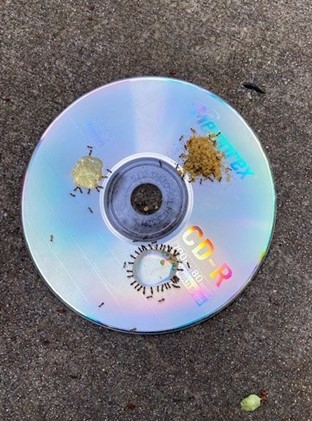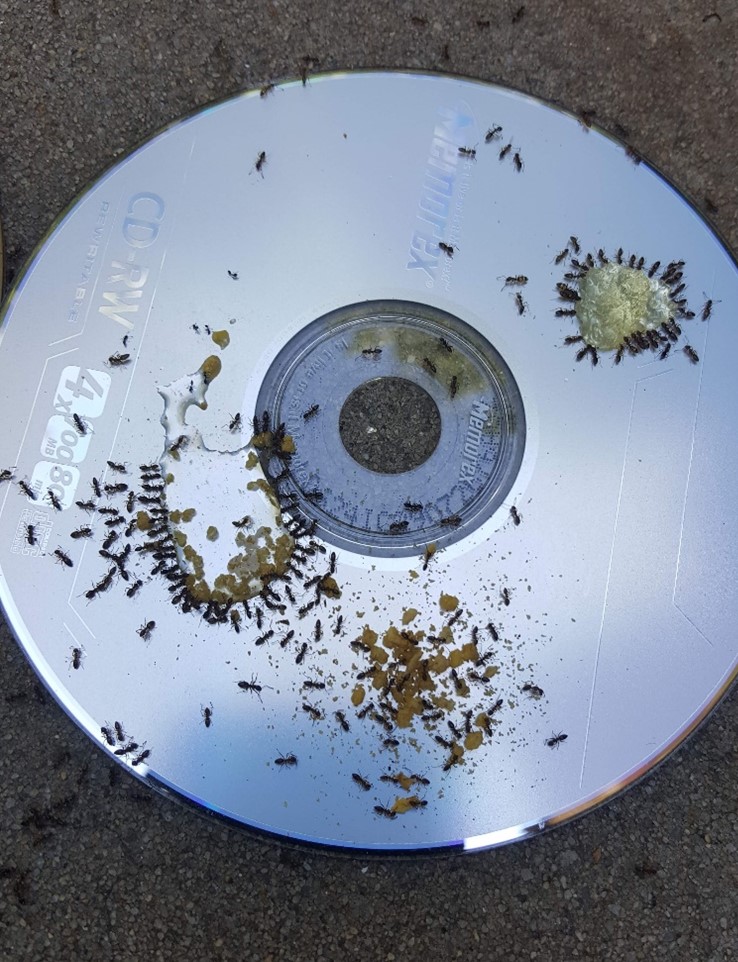Proper ant bait selection isn’t always cut and dry. In fact, a recent formulation study shows that bait effectiveness can depend on the season or ant species, so the more options, the better.
Though most ants are important for the work they do in nature, some are serious pests. Many pest control companies reported ants to be their No. 1 pest both in difficulty to control and the costliness re-services technicians must make. In the 2023 PCT State of the Ant Control Market Report, 52 percent of pest management professional (PMP) survey respondents reported they treat pest ants year-round, with 19 percent responding they treat seasonally.
The PCT Ant Control Market Report also reported that 93 percent of the PMPs surveyed reported that pesticide application is their primary control measure for a variety of ant species, with baits being one of the most common methods employed. Ant baits can be very effective, but proper bait selection can have many technicians scratching their heads. Proper bait selection depends on several factors, including what type of ant (or ants) are at the account. Most ants are small and challenging to identify. Misidentification may lead to little or no ant control for the customer.
As if ant identification was not difficult enough, effective bait selection can also depend on the time of the year for the application. Baits are a mixture of an attractant (food) matrix and an insecticide often applied in either a liquid, gel or granular formulation. Though most ants will eat anything, their preferences can vary throughout the year depending on the specific nutritional needs of the colony. Often, protein baits are a popular food source in the spring and summer for queen egg production. For summer into fall, carbohydrate baits may be preferred. Beyond the type of food preferred by season, the formulation type, such as liquid, gel or granule, also may vary seasonally in preference depending on the ant species. All this information leads to technicians asking questions regarding what formulation of bait may be preferred by specific ant species at different times of the year.
The goal of this study at Clemson University in South Carolina was to test the attractiveness of liquid, gel and granular bait formulations to urban pest ants in the field at three times of the year — spring, summer and fall. The ant species included acrobat, Argentine, dark rover, little black, field, odorous house and Asian needle ant colonies at different locations around the Clemson University campus.

MATERIALS & METHODS. Bait products were presented to foraging ant trails using a blank compact disc (CD) divided into three equal sections. The baits selected included Advance 375A Granular Ant Bait manufactured by BASF, Maxforce Fleet Ant Bait (gel) and Maxforce Quantum Ant Bait (liquid) both manufactured by Envu. A quarter-sized amount of gel and liquid bait was applied to the CD, along with one teaspoon of granular bait. Each species was exposed to the baits three times, rotating the CD by each trail to provide each bait the same proximity to the trail. The edge of the CD was placed 5 centimeters or less from each ant species and ants were counted for 30 minutes after initial contact with any of the baits. Evaluations for all ant species and all replications occurred between 10 a.m. and 2 p.m. on clear days during the spring, summer and fall in Clemson, S.C. Spring evaluations were done in April and May when the average temperatures during the observations ranged from 58.36-74.24 degrees Fahrenheit. Summer evaluations were done from early June to late July when the average temperature ranged from 74.76- 86.99 degrees Fahrenheit. Fall evaluations were all completed during October when the average temperatures ranged from 60.73-73.53 degrees Fahrenheit.
RESULTS. After baits were discovered, most of the bait formulations offered were contacted by most of the ant species over the three seasons during the 30-minute recording periods. While some bait formulations used in this study were more frequently visited by an ant species, the visits were not always significantly higher than one or both other bait formulations (Table 1). The bait formulation most selected by an ant species for each season is summarized in Table 2.
The most bait contacts were by Argentine and odorous house ants in the summer. Little black ants had minimal contact with gel bait in the spring and no contact with gel bait in the summer and fall. Asian needle ants also had minimal contact with the gel and liquid baits, preferring granular bait during all three seasons. Dark rover ants also perferred granular bait during all three seasons. Field ants had the most diverse bait selection, preferring gel bait in the spring, granular bait in the summer and liquid bait in the fall. Acrobat ants preferred liquid bait in the spring and granular bait in the summer and fall, but overall, they did not forage on the baits in large numbers. In general, all ant bait interactions by foragers decreased in the fall even though the fall temperatures were very similar to the spring temperatures during this study.
Table 1. Mean number of ant visits at a bait formulation, by season, after 30 minutes
| Spring | Summer | Fall | |||||||
| Species | Granule | Gel | Liquid | Granule | Gel | Liquid | Granule | Gel | Liquid |
| Acrobat | 21.67 | 11 | 23 | 132 | 2 | 15.67 | 26 * | 2.66 | 0.33 |
| Argentine | 54.67 | 35.33 | 71 | 277.33 | 150.67 | 195.67 | 77.67 * | 5 | 0 |
| Asian needle | 39.33 * | 3 | 1 | 78.67 * | 0.67 | 1.67 | 44.33 * | 0 | 0 |
| Dark rover | 142.67 | 51 | 64.33 | 163.67 | 21 | 53.33 | 39.67 * | 4.67 | 19 * |
| Field | 21 | 32.33 | 70 | 37.67 | 33.67 | 34.67 | 8.33 | 0.33 | 18.67 * |
| Odorous house | 93.33 | 87.33 | 70 | 173 | 168 | 256 | 91.67 | 70.67 | 85 |
| Little black | 320.67 * | 3.67 | 241.33 * | 265 * | 0 | 74.33 | 89.67 * | 0 | 0.67 |
* Indicates mean values that were different using Fisher’s LSD test (α=0.05) within a species and season
n=3
Table 2. General trend of most selected bait formulation by species and season
| Species | Spring | Summer | Fall |
| Acrobat | Liquid | Granule | Granule |
| Argentine | Liquid | Granule | Granule |
| Asian Needle | Granule | Granule | Granule |
| Dark Rover | Granule | Granule | Granule |
| Field | Gel | Granule | Liquid |
| Odorous House | Granule | Liquid | Granule |
| Little black | Granule | Granule | Granule |
SUMMARY. Being mindful that ant species, seasonal weather and temperatures will vary greatly across the country, we must be careful not to make broad generalizations on ant bait preferences based on our study in Clemson, S.C. Content of the types of food in a bait matrix is also very important depending on the time of year and species of ant targeted for control. However, we do feel these data and this study demonstrate that no one bait formulation is the best selection with every ant species in every season of the year. Ant species vary. Seasonal conditions vary. Thus, PMPs should be ready to have variable bait formulations at their disposal.
Song, Benson and Ellis are part of the Clemson University Urban Entomology Lab, Clemson, S.C. van den Meiracker is a board certified entomologist in the Technical and Training Department at Terminix Service, Columbia, S.C.

Latest from Pest Control Technology
- Donny Oswalt Shares What Makes Termites a 'Tricky' Pest
- Study Finds Fecal Tests Can Reveal Active Termite Infestations
- Peachtree Pest Control Partners with Local Nonprofits to Fight Food Insecurity
- Allergy Technologies, PHA Expand ATAHC Complete Program to Protect 8,500 Homes
- Housecall Pro Hosts '25 Winter Summit Featuring Mike Rowe
- Advanced Education
- Spotted Lanternflies, BMSBs Most Problematic Invasive Pests, Poll Finds
- Ecolab Acquires Guardian Pest Solutions





